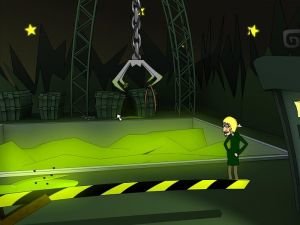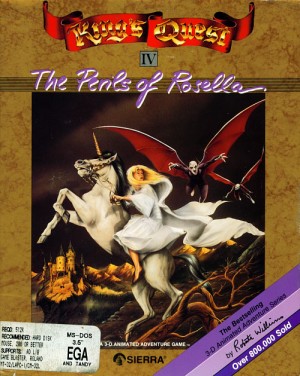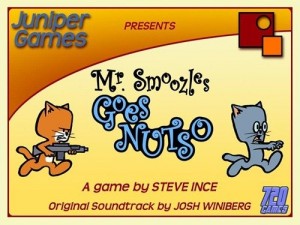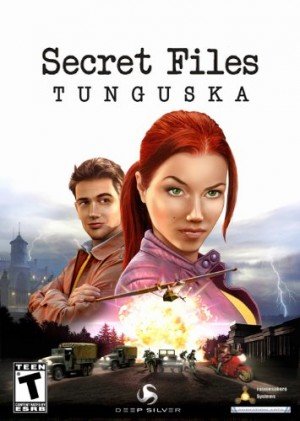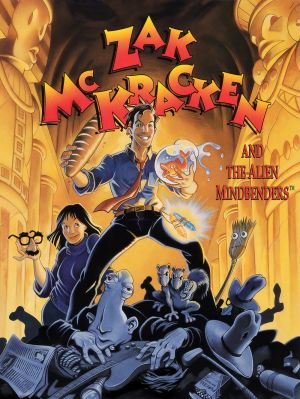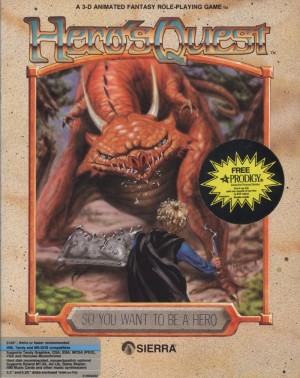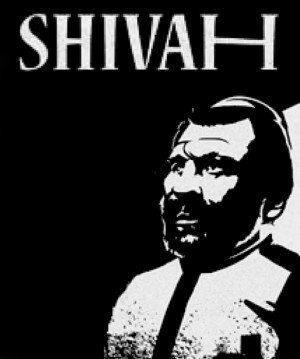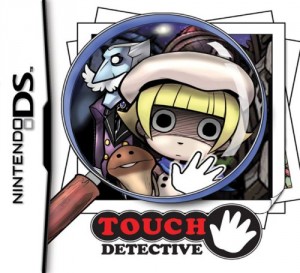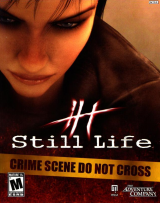Review for Death: Episode 1 - The Scythe of Unlimited Power
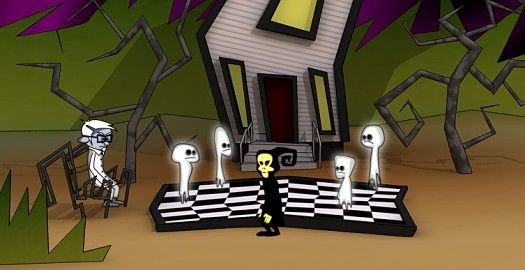
Playing adventure games over the years, we’ve all likely taken many roles: leader of a biker gang, wannabe pirate, guardian of time. I’ve even been an operative in the Department of Death. Now in a new freeware adventure series, HourGames’ Death: Episode 1 – The Scythe of Unlimited Power offers a promotion from that position, allowing players to become the Grim Reaper himself. Our reaper is less grim than you might expect, however, in this humourous, good-looking adventure that spans two planes of existence. This introduction to Death makes for an intriguing first outing, though the execution is not always as smooth as it could be.
Death lives a simple life, reaping souls based on assignments from his death monitors. In this endeavour he is aided by Doctor Zombie, his scientific adviser, and a trained monkey that watches the monitors when he’s out. However, a demon covets the power contained in Death’s scythe and has concocted a plan to bring the reaper down and seize the weapon for himself. Once separated from both his scythe and his body, the suddenly-ghostly Death will have to find a way back to his own realm from the human world and retrieve his stolen property.
As this is the first episode of a series, it’s no surprise that Death is only able to achieve the first part of his goal by the end. What I found more surprising is how long it takes to introduce the demon. The long opening cutscene seems more intent on hammering home the fact that Doctor Zombie is… err... a zombie, followed by an overly complex puzzle to find a way of feeding the trained monkey. The appearance of the demon touted on the game’s website thus becomes more of an “at last” moment than the intended dramatic turn. Even without this expectation, the opening challenge feels terribly mundane for your first actions as such a major figure, and I found it difficult to get into the game right away.
What’s instantly appealing from the start is the visual design. Despite its rather macabre theme, the game’s graphics are a cartoon style with good use of shading to give a real sense of depth to the scenery. Death’s realm is full of strange angles and distorted perspective, the top of his house being so bent over that it’s almost horizontal rather than vertical. Outside the front of this house is a ghost-laden chessboard, and a short walk takes you to the forbidding spiral that is the portal to the human realm. By contrast, the human world appears normal, with proper perspective and buildings that stand firmly upright. These backgrounds are enhanced by animations such as Doctor Zombie muttering to himself and rats that scurry around the earthly junkyard. Character models are equally well-designed: in his original form, Death is a yellowing skeleton in the traditional robe with red glowing eyes, and he later borrows the body of a gangly human geek. The character animations are also well done, with smooth movement individually suited to the body in question.
Given the amount of work that has clearly gone into the graphics, it is a shame that some shortcuts have been taken in some of the other animations. The most glaring of these is during a puzzle where Death is trying to take control of a new body. Death stands inside his victim’s head and attempts to influence the somewhat small brain, which results in the view changing to the person in question sitting in his room. You can only perform a limited number of actions this way before your influence fades and you are returned to the inside of his head. Whilst the text descriptions definitely indicate the man is performing the specified actions, the on-screen representation shows the body remaining completely motionless. This could easily lead a player to think they needed to do something else to enable movement, which is not the case.
The humour of the game largely derives from the contrast between this version of Death and the player’s expectations. A piece of ladies’ clothing and a teddy bear in his pink bedroom suggest a Death with somewhat different leisure pursuits than his more gothic traditions. In the latter part of the game, such a significant entity as the Grim Reaper occupying a demonstrably feeble vessel allows for some comic moments. In this form, the reaction of other characters to the declaration “I am Death and I have come for your soul.” is less than respectful. Not all the jokes come off quite as well. In particular, the “zombies like brains” joke in the opening cutscene was mildly amusing as a one-liner but is carried way beyond this point into the gameplay itself. The script isn’t helped by a handful of typos and odd phrasings of imperfectly translated English, as well as a font in which the small ‘h’ looks like an ‘n’. It was only from repeat appearances that I was able to determine what looked like “Hini” indicated a small laugh. Overall, I didn’t find the game laugh-out-loud funny, but it does have a gently whimsical atmosphere throughout.
Control is point-and-click, and unlike many games made with AGS, the only options are left-clicking to walk/interact and right-clicking to look. This distinction often seems meaningless as you’ll find that the two separate clicks regularly elicit the same response from non-critical items. Having come across this similarity several times in the opening scenes, I felt less inclined to use the look option later in the game, possibly overlooking some writing effort as a result. The inventory is accessed by clicking a spiral on the right of the screen, and it stays on-screen until manually closed again. Whilst interaction with the environment is possible with the inventory open, it disables any hotspot it even slightly overlaps, making this of limited advantage. Utilising inventory is not always easy at the best of times, as the specific point of interaction on the item cursors is not always clear. Traditional experimentation with items also suffers from a lack of variety in responses.
Fortunately, Death’s puzzles themselves are generally well implemented. Whilst a trip to the real world would easily resolve your monkey’s desire for a banana, creating a reasonable substitute requires clever use of the items available in Death’s realm. Once trapped inside a human body, and a feeble one at that, you have to utilise brains rather than Death’s supernatural resources to progress. You’ll use both inventory and the environment to trap two different creatures that move too fast for your human form to catch. You’ll even use the power of words to persuade a reluctant spirit to let you take over its body. These puzzles are helped along by clues both entirely overt and elegantly subtle throughout the game. Even the more obvious clues fit in with the narrative, and some clues I didn’t even recognise as such until after solving the clued puzzle. I perceived some puzzles as intractable at first, but I always found on subsequent reflection that the necessary information was available to me beforehand.
The game’s soundtrack features a variety of tunes. These range from a robust, almost military tune in the presence of the demon and his underlings to a more gentle piece befitting the city at night in the human realm. Whilst there is a good mix of instruments and tones across the overall score, some of the individual tunes involve a repeated theme with minor variances, making them feel a bit repetitive. Even so, I found they generally provided a pleasant background and I never felt the urge to turn them off. The music is supplemented by appropriate sound effects as well, be it the crackle of an electric charge or the constant sigh of the wind across Death’s home plane.
As a first game mainly from two Swedish brothers, the first episode of Death is a solid piece of work. It is graphically stylish and has reasonably thought-out and well-clued puzzles. There are definitely areas that need work, such as the paucity of interactive feedback and some missing animations, but none of these are game-breaking problems. In keeping with the developer’s name, The Scythe of Unlimited Power took me a little over an hour to play and ended on a cliff-hanger that leads into the next episode. With the next instalment starting in the middle of the action, the slow early pacing of this debut won’t be an ongoing problem, and I look forward to experiencing more of Death’s adventures.
Death: Episode 1 – The Scythe of Unlimited Power can be downloaded from the HourGames website.




